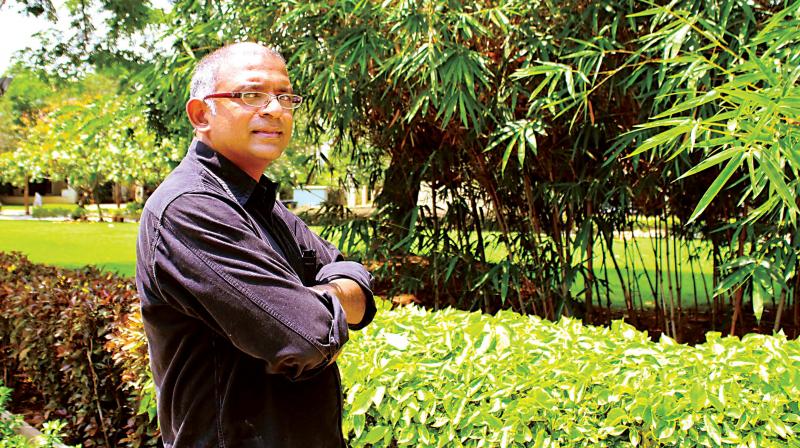DC's Gamechangers: Scarce water - Does Keerthi have the answer?

Every morning, Arvind Keerthi and his neighbours in Whitefield would awake to a new day without water. Barely a drop came from their borewells, there wasn’t enough to drink, bathe or water the plants. The gated community in Kundanahalli resembled a desert, with the community being forced to spend exorbitant sums on tanker water. And things got worse. In April 2011, the city was hit by a massive storm, which flooded the streets and left their compound wall in pieces.
Clearly, the situation presented a dichotomy. On the one hand, borewells didn’t give them enough water to drink and on the other, rain was in such surplus that it destroyed their property. “After the deluge, I checked the borewell, assuming to find some water there. We didn’t see a drop. Not even a trickle had made it below ground. That’s when a light came on in my mind,” said Keerthi.
This 'Cellphone Chip Designer' in Bengaluru decided to go back to one of India's most ancient water conservation systems- Rainwater Recharging. “You can dig borewells for all you’re worth but they receive water from the earth’s natural aquifiers. If rainwater doesn’t hit these, the borewells won’t recharge either,” he said.
The rain water, it turned out, flowed into the neighbourhood lakes, ultimately finding its way to the ocean. Keerthi, who knew no more about harvesting rain and recharging the ground water table than the average Bengalurean, collected every scrap of material he could lay his hands on. “Rain passes through the storm water drains and we placed check dams to check its flow. A pipe connects the water to an open percolation pit, forcing it into the ground. It was a simple solution, yes, but it proved magical for us!”
The excitement in his voice is palpable as he walks us through his journey, one that exemplifies citizen governance and community efforts. The plan was ready for execution and needed one thing: funds. Instead of waiting for the government to pitch in, residents decided to try something new. Crowdfunding was almost unheard of at the time, but they got together nevertheless, pooling in their resources to build their rainwater recharging plant.
The job was done in a month and results began to show at once. “It was a Renaissance, in terms of local green cover. We haven’t bought water in the last eight years!” said Keerthi, with understandable pride. “
The job was done in a month, to immediate results. “It was a one-time investment for us. We paid Rs 1.45 paise per litre of water,” he said elatedly. A far cry from the Rs 10 paise per litre that the tankers charge and certainly well below BWSSB’s rates, which stand at Rs 60 per litre. “Our costs are 15% of this,” he remarked.
Water is a growing problem in Bengaluru with concerned citizens looking within their own communities and neighbourhoods for sustainable solutions. “I want to encourage people to follow the mode,” said Keerthi at once. “It’s the simplest solution and the sense of independence you get from not having to worry about irregular supply is wonderful. We no longer have to beg an MLA, an MP or the BWSSB for water.”

